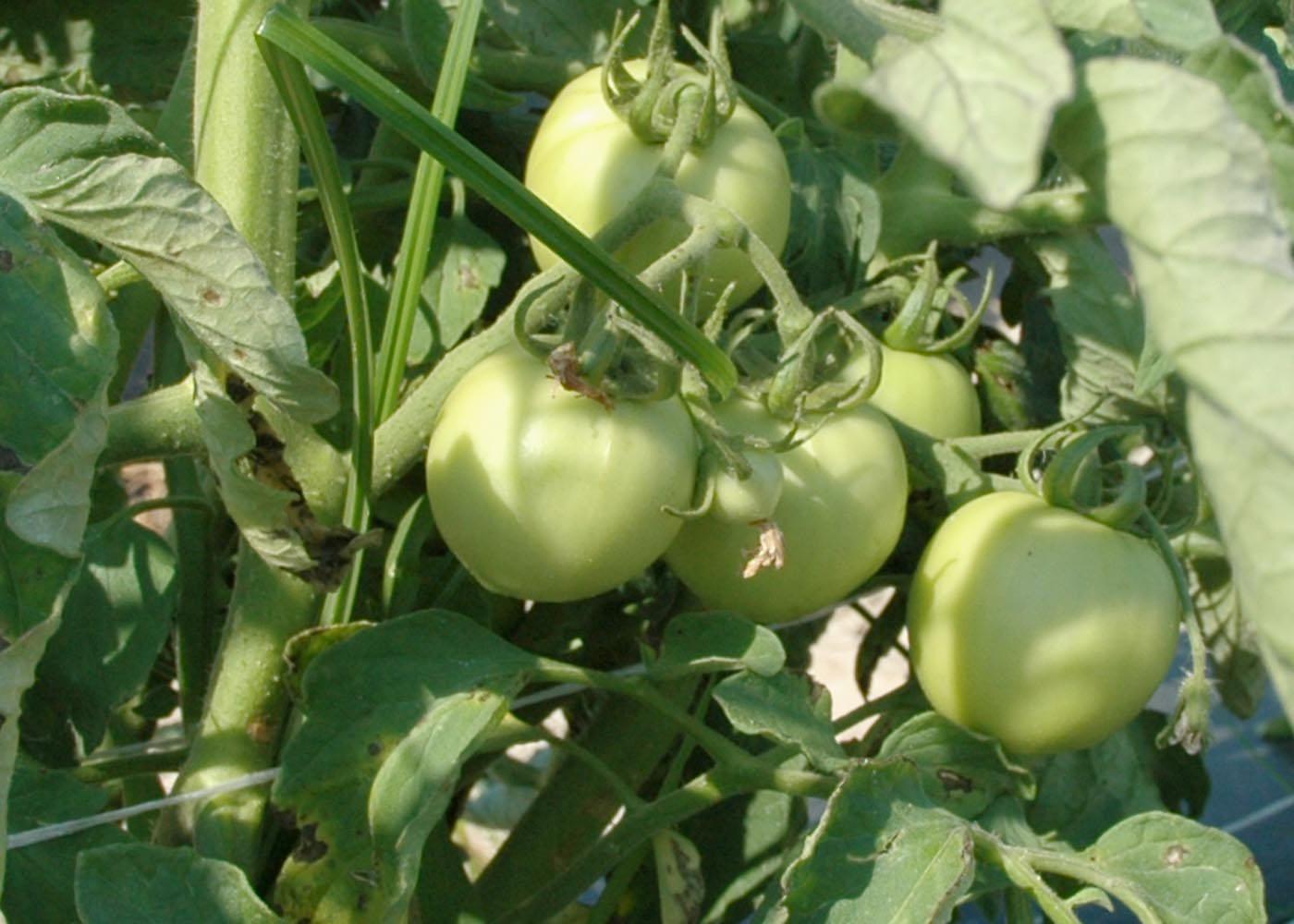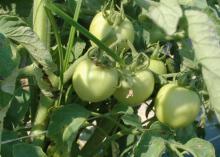Information Possibly Outdated
The information presented on this page was originally released on May 27, 2005. It may not be outdated, but please search our site for more current information. If you plan to quote or reference this information in a publication, please check with the Extension specialist or author before proceeding.
Cool temperatures delay first tomatoes
MISSISSIPPI STATE -- Cool temperatures have forced Mississippians to wait even longer for summer's much-anticipated first tomatoes.
A perennial treasure from Southern gardens, tomatoes may be late, but the quality should compensate eager consumers.
David Nagel, horticulturist with Mississippi State University's Extension Service, said tomatoes from Florida to Arkansas are as much as two weeks behind schedule because of lower-than-normal temperatures.
“Prices are very good right now, but by the time Mississippi's crop ripens, it will be competing with Florida's. That will probably result in lower prices for our growers,” Nagel said. “The good news is that when Mississippi's tomatoes ripen, they will be a very good quality. Clear skies, bright sunshine and dry air are all positives that will improve the taste.”
Nagel said northern winds and cool temperatures have helped keep insect pressure light. He has heard minimal reports of tomato spotted wilt virus, a disease that hit the state's industry very hard in 2004.
Allen Eubanks of Eubanks Produce near Lucedale said his crop is a week to 10 days behind normal. He said he hopes to begin picking around the first weekend in June. Dry conditions have caused him to irrigate around the clock rather than the normal few hours each day.
“I'm expecting a very good quality crop. Having little to no rain has helped keep diseases down. Healthier fruit should have a longer shelf life,” Eubanks said.
Mel Ellis of Mayhew Tomato Farm in Lowndes County said locally grown tomatoes offer consumers a better option than produce shipped from several states away.
“These tomatoes will not be as fragile as varieties grown in a home garden, but they will taste similar. They will hold up very well for local stores and consumers,” Ellis said.
With an annual target of June 1 for first harvest, Ellis said his crop will be less than a week late. Plants typically reach maturity 70 days after planting and are in full swing 10 days later. As the warm temperatures help the plants mature, Ellis said they are less likely to be affected by tomato spotted wilt virus.
“The plants have been almost disease-free this year. We've had a regular spray regimen to contain the typical problems,” he said.
Ellis has increased the number of tomatoes planted each year in an effort to meet consumer demand. This year, he tripled the size of his crop with 35,000 to 40,000 plants expected to be in production.




